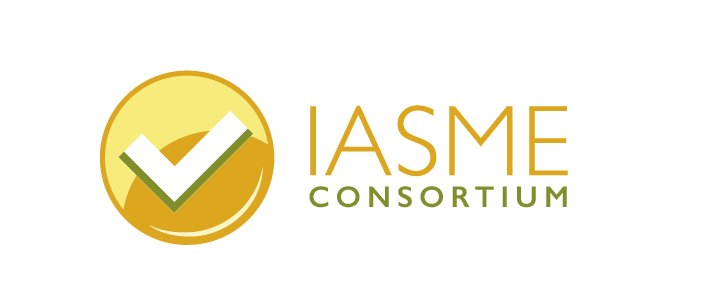‘Continuous improvement, originating from the Kaizen methodology, is the practice of improving processes, streamlining work to reduce waste or improve customer service. It is now being used by thousands of organisations across the world to improve business performance.’ (1)
Has there ever been a better time for organisations to develop or reinvigorate their culture of continuous improvement?
- Economic uncertainty, supply chain disruption, increased competitive pressures and the availability of automation technologies- are all pressing reasons why continuous improvement initiatives are rising in importance.
- The need to improve quality, reduce waste and identify where customer service can be improved can hardly have been urgent.
Six sigma, kaizen, lean – just a tiny selection of methodologies that have drifted in and out of favour over the years – and you would hardly find a senior leader who doesn’t advocate for a culture of continuous improvement.
But, in the ‘hurricane of change’ engulfing the business world – continuous improvement often falls by the wayside – and then sadly slips down the organisation’s agenda.
Add it doesn’t help that most organisations consist of functional silos – where leaders can be more concerned about their teams’ performance than the effectiveness and efficiency of the whole end-to-end process (particularly during difficult times). It’s no wonder continuous improvement initiatives often struggle.
Here are some ideas to get things back on track.
1. View continuous improvement as an ongoing long-term strategic focus.
Continuous improvement is a cultural shift, drawing on multiple resources across different functions – meaning there is the need for a strong and visible sponsor and that good programme management disciplines must be in place.
‘A single-minded focus on next quarter’s numbers is sure to crowd out ongoing investments in continuous improvement.’ (2)
2. Align the drive for continuous improvement to the mission and purpose of the organisation
Organisations whose people share a clear sense of who they are, and the impact they are trying to have on the world, are well placed to overcome internal barriers to improving customer value.
For example, one from the Sysdoc consultancy team worked leading projects in the UK ambulance service for three years.
In an environment where employees care about people, want to provide better patient care, and are proud of their professionalism – staff weren’t motivated by cost reductions and were unlikely to embrace cost-saving approaches. But they did enthusiastically adopt methods that eliminated waste and improved patient experience.
3. Take a Data-Driven Approach
Many of the well-practised continuous improvement methodologies promote a data-driven approach – and an abundance of data can help.
Typically, good starting points are:
- Customer complaints data (online customer comments and interactive sections on company websites are great ways to collaborate with customers and collect data).
- Data identifying processes which lead to frequent handoffs between staff.
- Data indicating high error rates or levels of rework, and
- Data identifying broken processes – holding up work delivery at some later point.
For example:
- The BBC recently reported that paramedics in the East Midlands region wait three times the national average to hand patients to local hospitals. The delays are creating critical service failures – leading to an urgent review of how the patient handover process can be improved. (3)
- Agents at a client’s contact centres are regularly asked to record calls where the customer has rung before. This is so that ‘repeat calls’ can be eliminated by process improvement – and service levels improved.
- Telephony data can identify types of calls transferred by customer-facing staff to ‘back-office colleagues. The goal is to identify how the agent who initially took the call can be equipped to provide a ‘one-stop’ service.
- There is an increasing trend to automate complex supply chain processes using the latest intelligent technologies. Data shows where delays occur and the impact on delivery times and service performance. The processes creating the delays are improved – often through collaboration between the client and the supplier.
4. Know that continuous improvement is about more than improving efficiency.
Too many continuous improvement projects focus so much on gaining efficiencies that they don’t challenge the basic assumptions of what’s being done.
For example, the ‘Harvard Business Review reports that a six-sigma team spent time streamlining information flows between headquarters and the field sales force but didn’t question how the information was ultimately used. Once they did, they could eliminate much of the data and free up thousands of hours redeployed to customer-facing activities. (4)
5. Assess the impact on staff motivation and organisational culture
One additional and often overlooked benefit of continuous improvement is the impact on staff motivation and organisational culture – where the progress can be tremendous.
Staff don’t like working in environments where they are dealing with broken processes and having to do rework. They know the result is poor service and too many complaining customers. They will be keen to see progress and celebrate improvements.
Finally, the ‘Harvard Business Review’ has some advice for managers and leaders on the issue of continuous improvement:
‘Take a personal interest in improving processes to meet customer expectations and improve efficiencies. Employees learn what managers value by watching what they spend time on. If they see you listening for and solving customer problems and improving processes, they’ll follow suit.’ (5)
Perhaps it is time to get serious (again) about continuous improvement.
- What is continuous improvement? www.planview.com
- Customer centric continuous improvement, Harvard Business Review, April 2011
- East Midlands Ambulance Trust says every hospital on ‘worry list, BBC, 2 September 2022
- It’s time to rethink continuous improvement, Harvard Business Review, May 2012
- Customer centric continuous improvement, Harvard Business Review, April 2011
About the author – Marielle Howitt:
Marielle is a Lean Process Expert with in-depth, multi-sector experience and specialist business transformation expertise. An energetic and outgoing individual with excellent stakeholder management who has spent 10 years specialising in process improvement, change management, system design and implementation, data migration and MI reporting. With an impressive track record of successfully leading various projects within Achilles and Sysdoc continuously demonstrating core skills which lead to success which includes commercial discussions. A Business Transformation specialist who uses pragmatic and business focused processes to drive performance and pursue continuous improvement through Lean Methodology.










Leave A Comment